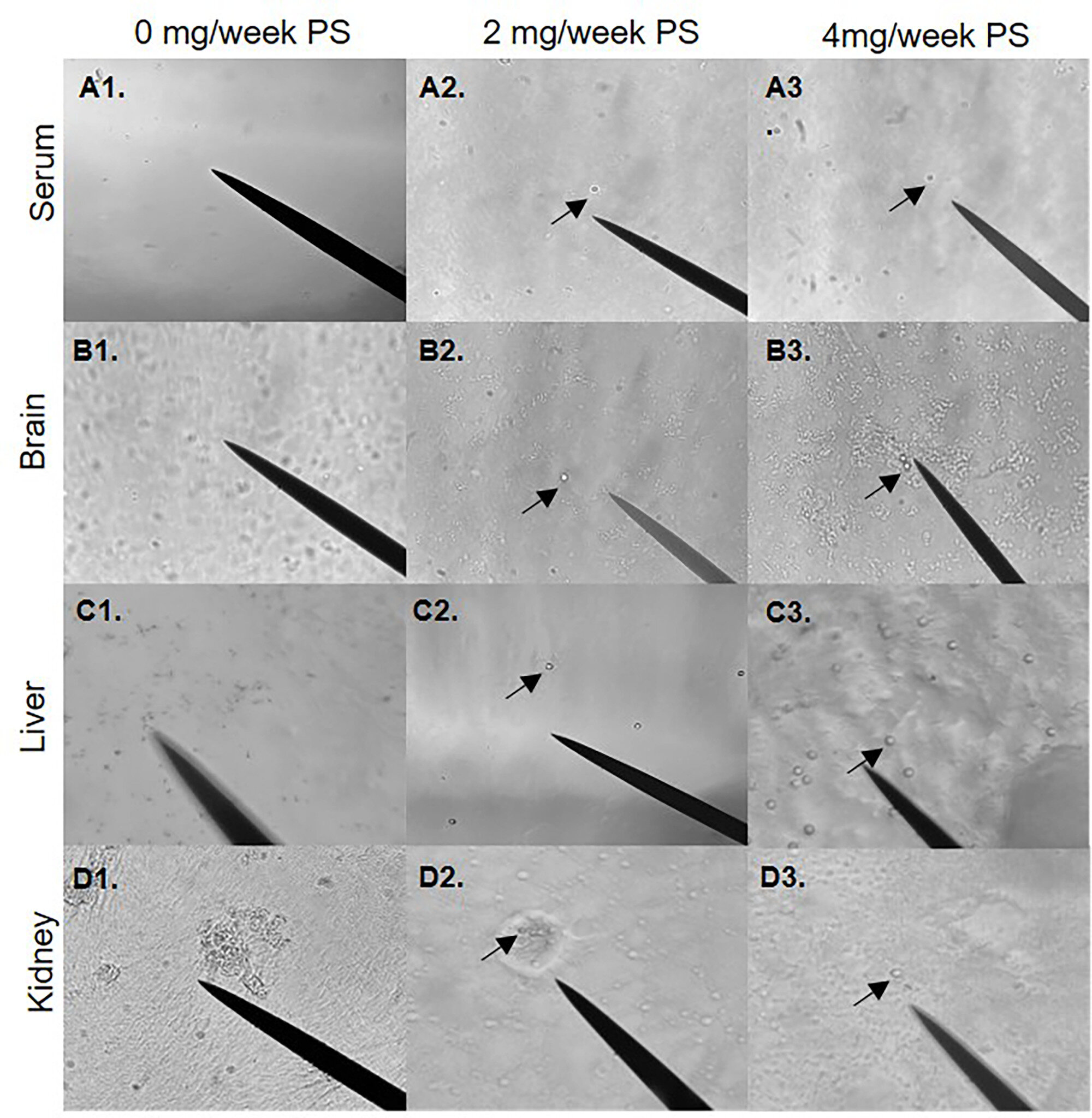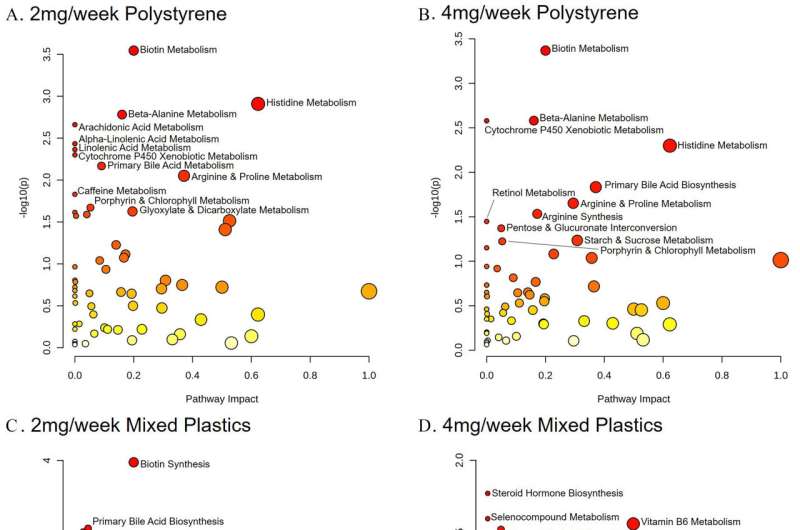Health
Microplastics find their way from the intestines to other organs, researchers discover

Visualization of systemic translocation of polystyrene microspheres. Visualization of polystyrene microspheres resuspended from isolated pellet in 100% EtOH. The black arrow indicates polystyrene microspheres. Credit: Environmental health perspectives (2024). DOI: 10.1289/EHP13435
It happens every day. From our water, our food and even the air we breathe, small plastic particles find their way into many parts of our bodies.
But what happens once those particles are inside? What do they do to our digestive system?
In a recent article published in the journal Environmental health perspectivesResearchers from the University of New Mexico discovered that these small particles – microplastics – have a significant impact on our digestive tract, as they pass from the intestines into the tissues of the kidneys, liver and brain.
Eliseo Castillo, Ph.D., associate professor in the Division of Gastroenterology and Hepatology in the Department of Internal Medicine at the UNM School of Medicine and an expert in mucosal immunology, leads the charge on microplastic research at UNM.
“In recent decades, microplastics have been found in the ocean, in animals and plants, in tap water and bottled water,” Castillo explains. “They seem to be everywhere.”
Scientists estimate that people ingest an average of five grams of microplastic particles per week, which is equivalent to the weight of a credit card.
While other researchers are helping to identify and quantify ingested microplastics, Castillo and his team are focusing on what the microplastics do in the body, specifically in the gastrointestinal tract and the gut’s immune system.
Over a four-week period, Castillo, PharmD postdoctoral researcher Marcus Garcia, and other UNM researchers exposed mice to microplastics in their drinking water. The amount was equal to the amount of microplastics that people ingest every week.
Microplastics had migrated from the intestines to the tissues of the liver, kidneys and even the brain, the team found. The study also found that the microplastics altered metabolic pathways in the affected tissues.
“We were able to detect microplastics in certain tissues after exposure,” says Castillo. “That tells us it can cross the intestinal barrier and infiltrate other tissues.”

Analysis of the colonic metabolomic pathway. Credit: Environmental health perspectives (2024). DOI: 10.1289/EHP13435
Castillo says he is also concerned about the accumulation of plastic particles in the human body. “These mice were exposed for four weeks,” he says. “Think about how that compares to humans, if we’re exposed from birth to old age.”
The healthy lab animals used in this study showed changes after a short exposure to microplastics, Castillo says. “Now imagine if someone has an underlying condition, and these changes are happening, could microplastic exposure worsen an underlying condition?”
He has previously discovered that microplastics also affect macrophages – the immune cells that protect the body against foreign particles.
In an article published in the magazine Cell biology and toxicology in 2021, Castillo and other UNM researchers found that when macrophages encountered and ingested microplastics, their function changed and they released inflammatory molecules.
“It changes the metabolism of the cells, which can change the inflammatory responses,” says Castillo. “During inflammatory bowel disease – conditions of chronic diseases such as ulcerative colitis and Crohn’s disease, which are both forms of inflammatory bowel disease – these macrophages become more inflammatory and more abundant in the intestines.”
The next phase of Castillo’s research, led by postdoctoral researcher Sumira Phatak, Ph.D., will investigate how diet is involved in the absorption of microplastics.
“Everyone’s diet is different,” he says. “So what we’re going to do is feed these lab animals a diet high in cholesterol and fat or a high fiber diet, and they may or may not be exposed to microplastics. The goal is to try to understand if diet influences the absorption of microplastics into our bodies.”
Castillo says one of his Ph.D. student, Aaron Romero, is also trying to understand why there is a change in the gut microbiota. “Several groups have shown that microplastics change the microbiota, but how they change the microbiota has not yet been investigated.”
Castillo hopes his research will help reveal the potential impact of microplastics on human health and help drive changes in the way society produces and filters plastics.
“Ultimately, the research we’re trying to do is to find out how this affects gut health,” he notes. “Research continues to show the importance of gut health. If you don’t have a healthy gut, it affects the brain, liver and so many other tissues. So even if you imagine that the microplastics are doing something in the gut, chronic exposure could lead to systemic effects.”
More information:
Marcus M. Garcia et al., In vivo tissue distribution of polystyrene or mixed polymer microspheres and metabolomic analysis after oral exposure in mice, Environmental health perspectives (2024). DOI: 10.1289/EHP13435
Quote: Microplastics find their way from the intestines to other organs, researchers find (2024, April 15) retrieved April 15, 2024 from https://medicalxpress.com/news/2024-04-microplastics-gut.html
This document is copyrighted. Except for fair dealing purposes for the purpose of private study or research, no part may be reproduced without written permission. The content is provided for informational purposes only.













